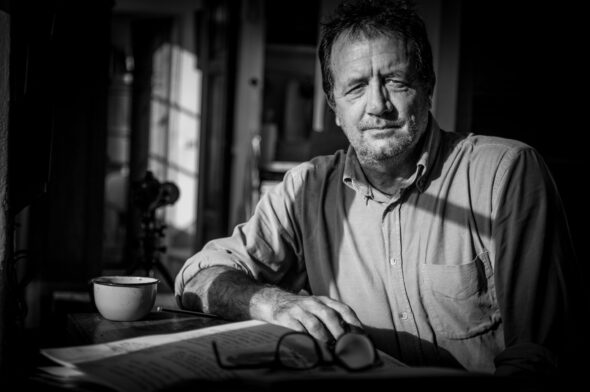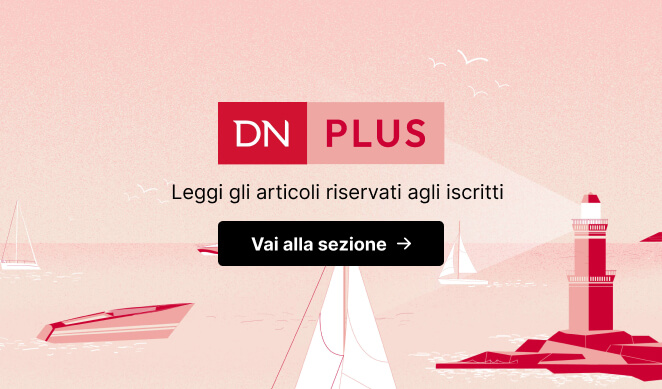Boating in a Portrait | Davide Besana: “I suggested cartoons on sailing, but at that time it was considered crazy. Now stories and drawings of the sea are successful”
Davide Besana, journalist, writer, cartoonist and illustrator, but first and foremost, sailor, shares with us how he brought boating and drawing together and his relationship with the sea

Boating in a Portrait | Davide Besana: “I suggested cartoons on sailing, but at that time it was considered crazy. Now stories and drawings of the sea are successful”
Davide Besana, journalist, writer, cartoonist and illustrator, but first and foremost, sailor, shares with us how he brought boating and drawing together and his relationship with the sea
Davide Besana was born in Milan in 1963, but lives in Lerici, Liguria. He is a journalist, writer, cartoonist and illustrator, but first and foremost a sailor. He sails for pleasure, but mostly for competition in every season.
A self-taught sailor, he became a skipper before even having his driving licence. He has been on boats of all kinds, sailing with the greats, from Sicouri to Peyron, Paul Cayard and Mauro Pelaschier. He won the Barcolana, the Millevele, the Giraglia, the Zegna Cup, the Pirelli Cup, the Panerai Cup and many other regattas.
Raised in a family of journalists, he was the first to suggest a cartoon to the sailing papers, being initially refused by Giornale della Vela, but then being very successful with the monthly, Bolina, with which he has been working (now occasionally) from the very first issue.
His latest books have been “Tontopedia Navalis”, “52 Idiozie da non fare in barca” (Nutrimenti), “Gli Yachts che hanno fatto lo Yachting” and “Elvstrom e il suo Finn alle Olimpiadi di Napoli del 1960″ (Yachting Library). He is also the author of a new sailing manual, 160 pages written and drawn by him. It took him six months to complete and will soon be published by Nutrimenti. He has also written a cookbook and a children’s book, which will be released through Edizioni 5 Terre.
Davide Besana, how did you first come into contact with sailing and boating?
My father, who had sailed a bit with friends, took us to the Tuscan archipelago with a 28-footer when I was 11 years old. I loved it so much, which is funny, because I was always bored when I went to the beach.
What led you to create that cartoon on the America’s Cup when you were 20?
Boating magazines are full of advertising. I was good at drawing and the Giornale della Vela had me illustrating the “boats of the month”, hidden advertising, or, as we called them at the time, “editorials”. After a few years, I got tired and put forward the idea of a cartoon series. Now it is normal, and Graphic Novels are common, but at the time it was considered to be crazy, and my editor told me to let it go, because no-one would have ever read them.
Notwithstanding the “rejection” of that first cartoon by the editors, your drawings have become the key to your success. When did you notice that the public had begun to appreciate your formula: telling stories of the sea in an original format like cartoons and watercolours?
The monthly, “Bolina” put my name out there, and I realised month after month they were becoming more popular. My success is not only due to the cartoons, but also to the stories that are told. Sailors have appreciated the stories, written by one of them, and easy for them to identify with.
With a drawing or cartoon, you are able to make people smile, or highlight a fundamental piece of advice for anyone going out to sea. How do you “design” a cartoon?
Basic humour comes from listening to what people say and drawing it from a different point of view. The same thing said in the wrong place makes people laugh. In truth I do a lot of polishing, in order to create a more immediate and memorable relationship with the reader. Synthesis requires a lot of work.
Outside of your cartoons, what is your relationship with the sea?
From my house, I can see the Gulf of La Spezia and at night the Tino lighthouse lights up my room. For me the sea is a constant. Now that I am forced to be landbound, I often dream of sailing, and I think this says everything, really.
I have a boat, which I had bought in 1986 for my parents, and which was left to me. It is a 35-footer designed by Ron Holland and built in lamellar by Petronio e Pecarich. I sail around the Gulf of La Spezia, last year I went to Corsica: in two we arrived third in class in the 151 miles, second in the Velacup, a four hand race with my daughter, and second in Assoregata, also four hands, but with Rachele Fogar. Then we won the Meriperman Cup, the Vele d’epoca di Imperia and the Vele storiche di Viareggio.
At the helm of the One Tonner Ojalà we won the historic regattas of Livorno, Argentario and Saint Tropez and were on the podium again at Les Voiles de St Tropez and Barcelona. I finished the year with a second place in the autumn championship in Carrara at the helm of Low Noise, and started the year by buying, together with two friends, a Corsaire from 1969, a five and a half metre wooden boat, of which nearly 4 thousand pieces were made. It is in a field in Bocca di Magra, waiting to be launched. If the pandemic hadn’t come, it would have been a great year for sailing, with four boats to compete with.
Giuseppe Orrù
Photos by Claudio Colombo
BOATING IN A PORTRAIT A project by Liguria Nautica and Claudio Colombo showcasing a gallery of Ligurian people or those who have ties with our region, who have left their mark on Italian boating, or who have deep rooted connections with our sea. For each of them, we present a photographic portrait take by Claudio Colombo and an interview with our journalist, Giuseppe Orrù, to better know each person, in their personal lives as well.
Topics: Boating in a Portrait, Davide Besana



